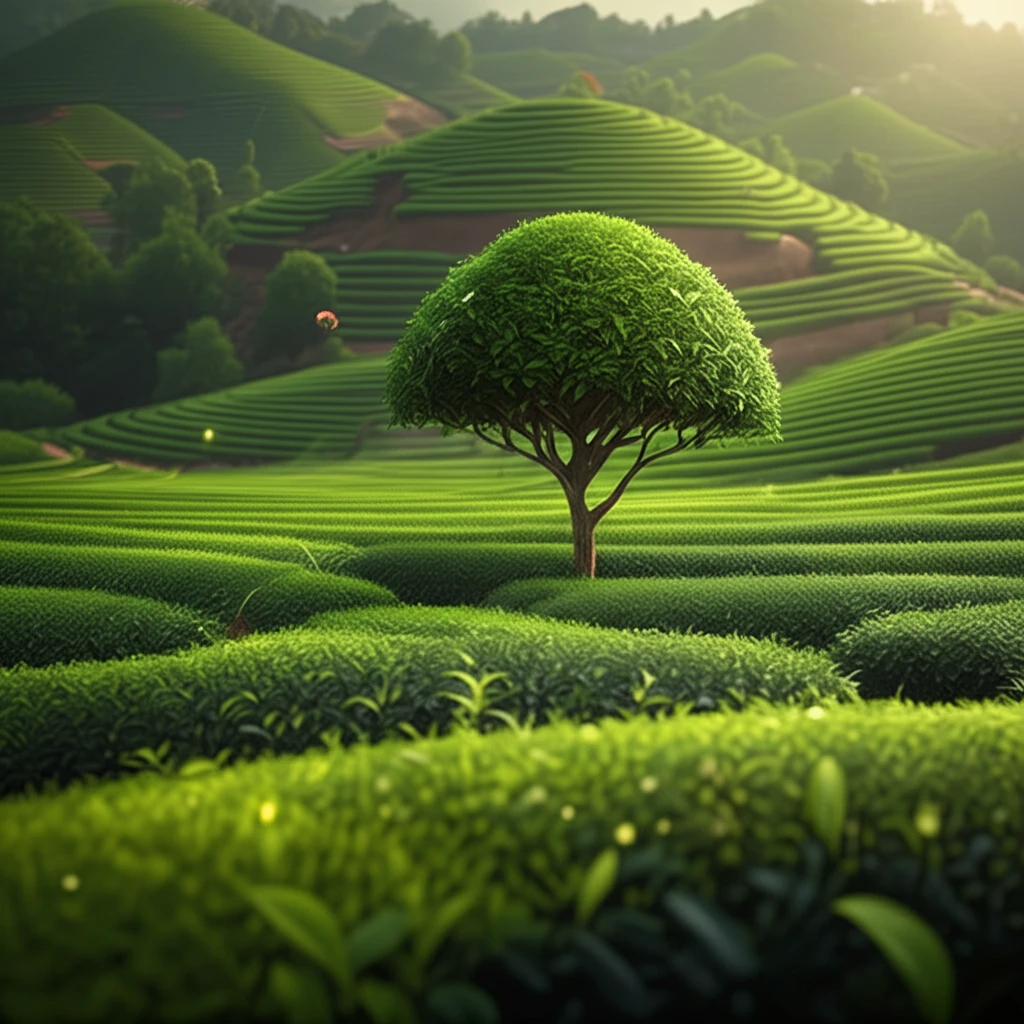
Unlocking the Secrets to a Perfect Tea Bush: How to Dwarf, Branch, and Boost Your Yields
"Discover the surprising effects of TIBA on tea plants and how it can revolutionize your tea cultivation practices."
For centuries, tea has been more than just a beverage; it’s an economic cornerstone in many parts of the world. Central to maximizing yields and ensuring top-notch quality is understanding how to manage the growth of tea plants. One critical aspect is regulating shoot branching, a complex process that’s long been a subject of intense research. Plant hormones play a starring role here, and manipulating these hormones can lead to some pretty impressive results.
One technique gaining traction involves plant growth regulators, which can spur shoot branching. By encouraging more branches, growers can sidestep diseases caused by excessive pruning and simultaneously cut down on labor costs. It's all about finding the right balance and understanding the plant's natural tendencies.
Among the key players in this hormonal dance is auxin, a primary hormone that dictates how lateral branches develop. Auxin typically travels from the primary shoot apex downwards, suppressing the growth of axillary buds. But what if you could disrupt this flow? That's where auxin transport inhibitors come into play. These inhibitors, like 2,3,5-Triiodobenzoic acid (TIBA), can alter the plant’s growth patterns, potentially unlocking new levels of productivity.
The TIBA Advantage: Dwarfing, Branching, and Yield

A recent study focused on how TIBA affects tea plants, specifically the 'Longjing 43' cultivar, a popular choice for green tea in China. Researchers applied varying concentrations of TIBA to tea bushes after heavy pruning—essentially, when the plants had just begun to sprout new leaves in late May. The goal? To see how TIBA influences new shoot growth and the development of lateral branches.
- Branch Control: The number of lateral branches also saw changes. While lower concentrations of TIBA (50 and 100 mg/L) slightly decreased the number of lateral branches, higher concentrations didn't have as significant an impact.
- Branch Length and Diameter: Interestingly, 100 mg/L of TIBA increased the length of lateral branches by a notable 34.3%. Moreover, both 50 and 100 mg/L TIBA treatments increased the diameter of lateral branches by 9.45% and 12.46%, respectively.
- Photosynthesis: Over a two-month period, lower concentrations of TIBA (50 and 100 mg/L) didn't significantly hinder photosynthetic rates, ensuring the plants could still efficiently convert sunlight into energy.
- Spring Tea Yield: The real kicker? A 100 mg/L TIBA treatment significantly boosted spring tea yield by 19.3% compared to the control group.
Practical Implications and Future Directions
So, what does this mean for tea growers? The study indicates that applying a 100 mg/L TIBA solution after heavy pruning in the summer—specifically, after the plants have sprouted two to three leaves—can optimize plant structure and increase yields. This targeted approach promotes effective lateral branching and can potentially reduce the need for excessive pruning, saving both time and resources.
